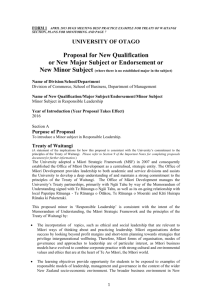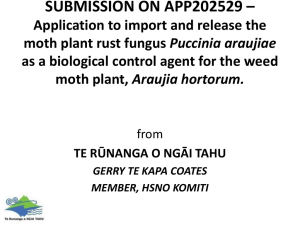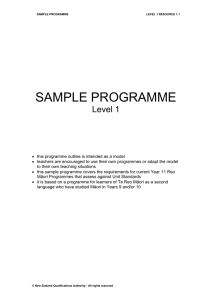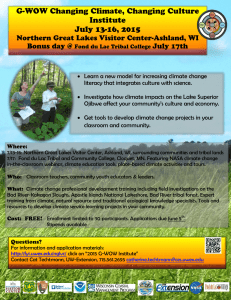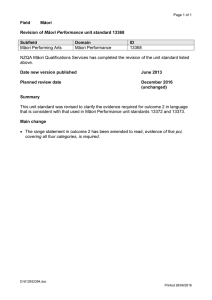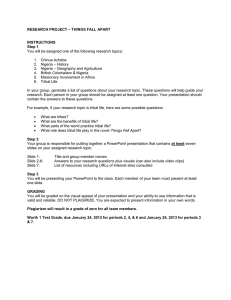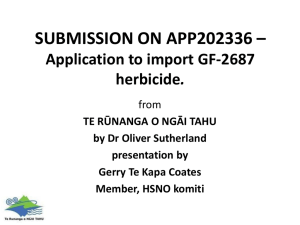12654367_Wahkohtowin September 2014.ppt (2.656Mb)
advertisement
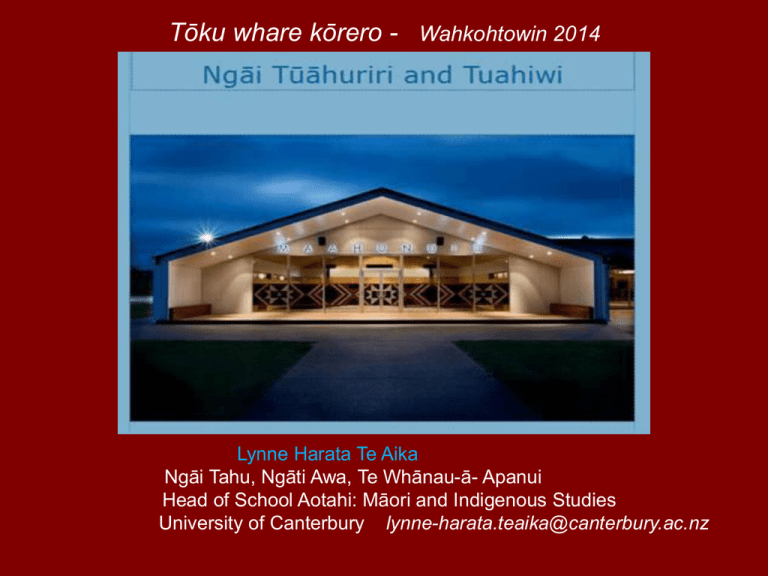
Tōku whare kōrero - Wahkohtowin 2014 Lynne Harata Te Aika Ngāi Tahu, Ngāti Awa, Te Whānau-ā- Apanui Head of School Aotahi: Māori and Indigenous Studies University of Canterbury lynne-harata.teaika@canterbury.ac.nz Tōku whare kōrero: Indigenous long houses as places for the re-education of nonindigenous adult educators in the Ngāi Tūāhuriri tribal takiwā (territory) of Aotearoa (New Zealand) † Aotearoa- New Zealand 4 million people 650,000 Māori 30% under 15 years of age < 8 fluent, 25% basic Understanding of the langauage Ngāi Tahu tribe 50,000 on tribal register Less than 1% of Ngāi Tahu fluent in Te Reo Maori 25% have a very basic understanding of the language 3-5 generations of language loss Te Waipounamu • Waitaha Kāti Waewae Rünaka Te Rūnanga o Makawhio Inc Kaiköura Rünanga • Ngāti Mamoe Te Rünanga o Arowhenua Te Rūnanga o Waihao • Ngāi Tahu Te Rūnanga o Moeraki Käti Huirapa ki Puketeraki Rünanga Te Rūnanga Otäkou Oraka Aparima Rünaka Hokonui Rūnaka Waihopai Rūnaka Awarua Rünanga Ngāi Tuahuriri Rünanga Te Rünanga o Rapaki Wairewa Rünanga Te R`unanga o Koukourarata Te Rūnanga o Onuku Te Taumutu Rūnanga Treaty Education Government policy Educators may complete a 1-2 day treaty workshop but it is not mandatory across all teacher training providers and government institutions. Only the University of Canterbury has compulsory treaty workshops. Recent government initiatives Ka Hikitia-Māori enjoying educational success as Māori. Tataiako-Cultural Competencies for Teachers of Māori Learners Ka Hikitia & Tataiako Government speak talks about raising Maori achievement but does not situate the context of learning in place or environment. Has some good values and intent but could be happening anywhere in the world. The treaty partners voice is missing. P m PM M P Background to workshops The primary purpose of these workshops is to introduce non-indigenous educators to their local tribal community and for them to learn about the tribe’s stories of place, tribal histories and culturally significant sites. For Ngāi Tuāhuriri, these workshops were an important step in building their own capacity to take a leadership role across all sectors of local education providers. In their tribal region, there are numerous adult/tertiary education providers, over 160 schools, and more than 300 early childhood centres. Almost all of these institutions, schools and centres are government funded Crown entities (i.e.Ngāi Tuāhuriri Treaty partners). Workshop Design • • • • • • • • • • • • 9am -3pm offered in school hours Powhiri-Welcome ceremony Kai-Morning Tea MihiOverview of tribal history of how our sub-tribe came to settle in the area Significant sites Group work-retelling stories of significance Lunch Questions & Answers Protocols on the marae and in the classroom Waiata-songs Next steps Evaluation Educators • Beginning introductory contact-positive experience. • Want everything delivered to them but need to learn about reciprocity and relationship building. • Need to work with senior leaders, managers and governors to make sure they are leading by example • Vertical geographical community clusters Tribal community • Building capacity • Sustainability-One new programme and resource at a time. • Succession planning Essential to train others so there is a pool of facilitators • Need to educate our own whānau (families) at the same time –parallel development. • Next steps Opportunities/Challenges/Tensions to be navigated • Post quakes greater awareness of place based pedagogy and willingness to engage in interaction with their local Māori community • Government funding versus self-funding for professional development • Tribal corporate leadership versus local subtribe initiatives • Continue to build tribal capacity and leadership- implement and deliver our priorities in education not just what Crown agencies want. • Treaty education in partnership; what does this mean in contemporary settings: identity, language and culture programmes. • Is this the same or different in Canada? Next steps-What participants asked for from one workshop. More stories linked to whakapapa (genealogy) connections that we can share with our Māori learners – links to their ancestors Online interactive resources Strategies to engage whānau (families) Building relationships with whānau(families) – what are effective strategies? The Pōwhiri – more learning opportunities, is Pōwhiri reserved for the Marae? Pōwhiri at schools i.e. opening of new buildings? Whaikōrero – a workshop on roles & responsibilities The roles of women on the Marae, Māori women and leadership Engaging students in learning – linking language, culture & identity While we have had the experience of being welcomed onto the Marae, how can we provide an authentic experience for our children? Sharing Maori research & knowledge to grow school leadership
